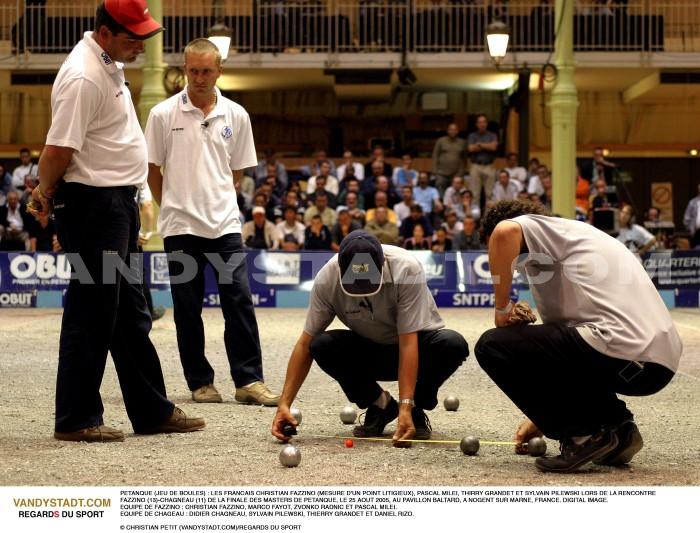| Happy Birthday : |

Petanque
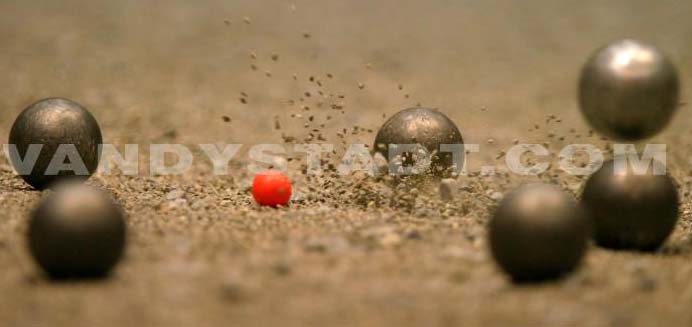
We need to go very far in time to discover the presence of bowling. It is not, in any case, that would attest, evidence in support of a length comparable to hers.
Thanks to research done by archaeologists found traces of the game in Egypt at the time of the Pharaohs. Then he appeared in Greece after the conquest of Egypt by Alexander the Great. The Greeks practiced while the launch of "sphéristiques. The popularity of this exercise was such that their positions were reserved in the Palestra - the first bowling! - So they can give free rein to their favorite activity. There is every reason to believe that it is the Roman legions, during the conquest of Gaul, introduced in the south of France. It is not possible to find traces of this game at this time and during the years that have followed. Not until the twelfth century it was again discussed in the chronicles of that time not only in France but in Germany, England, Spain and Italy of course. In the late nineteenth and early twentieth centuries, is in Provence, the balls with the "game of Provence" have experienced a fashion that will crescendo over the years.
While the game is played Provence in the south of France for over a century, it is not the same for the bowls, which arose much later. It was premiered in 1907 in La Ciotat. The expansion of these two sports has led to bold and brave to create in 1945 the French Federation of Petanque and Jeu Provencal (FFPJP).
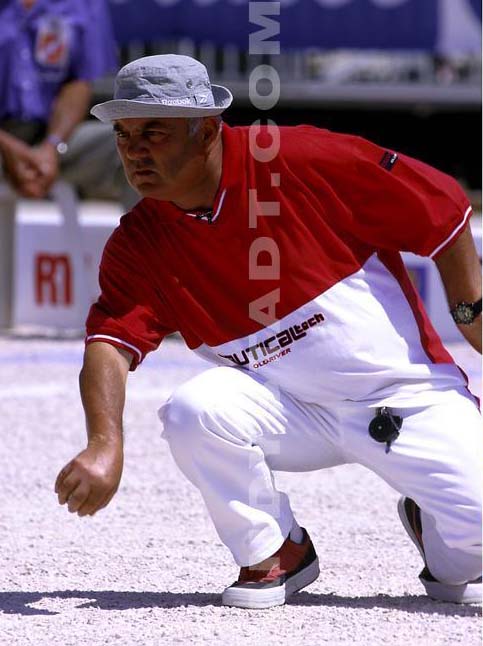
The World Championships are held since 1959 for men and since 1988 for women.
Good to knowIt Pitiot Ernest, a member of the circle Beraud and founder of the League Languedoc-Roussillon, which changed the basic rules in 1907 in a disputed part in La Ciotat allowing his great friend Jules Lenoir, suffering from rheumatism, continue to play bowling. Now we play both feet and motionless in a circle and a shorter distance. The first official competition took place in 1910 in La Ciotat. The term 'bowls' comes from the Provencal word 'Ped Tanco' or 'feet tanqués' or anchored to the ground. In contrast, the game lets Provencal gain momentum.
The International Federation of Petanque was created in 1958 with the original seven national associations (Belgium, Spain, France, Italy, Monaco, Morocco and Tunisia) and has 75 member countries.Bocce derives its name from a corruption of Provençal phrase "Pestanques", meaning "feet together".
Rules and Principles Age categories of playersMinimal: less than 11 years
Cadets: 12, 13, 14
Juniors: 15, 16, 17
Seniors: over 17 years
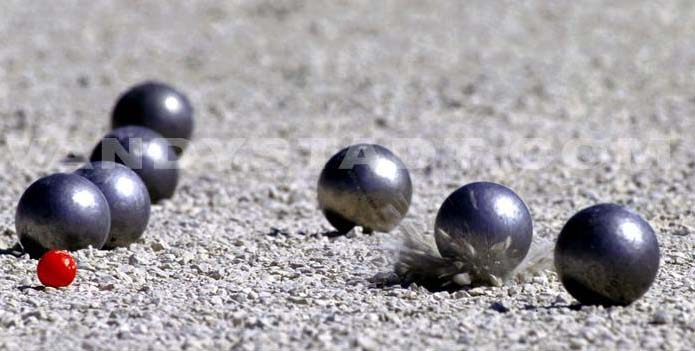
There are 12 Championships in France and 2 National Trophies:
Petanque:
Triplets Seniors
Triplets Juniors
Triplets Cadets
Triplets Minimes
Seniors doubles
Head-to-Head Seniors
Women's doubles
Corporate Triplets
Mixed (one male and one female)
Veterans.
Thurs Provençal:
Triplets Seniors
Seniors doubles.
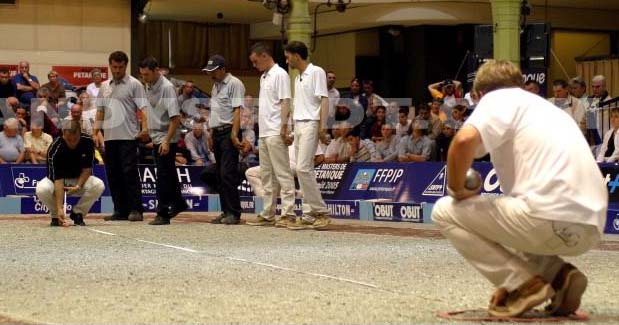
The Petanque is a sport that opposes:
- 3 players with 3 players (triples)
She may also face to face:
- 2 players 2 players (doubles)
- 1 player 1 player (head-to-head)
In triples each player has two balls.
In doubles and head-to-head, each player has three balls.
Any other form is prohibited.
Hardware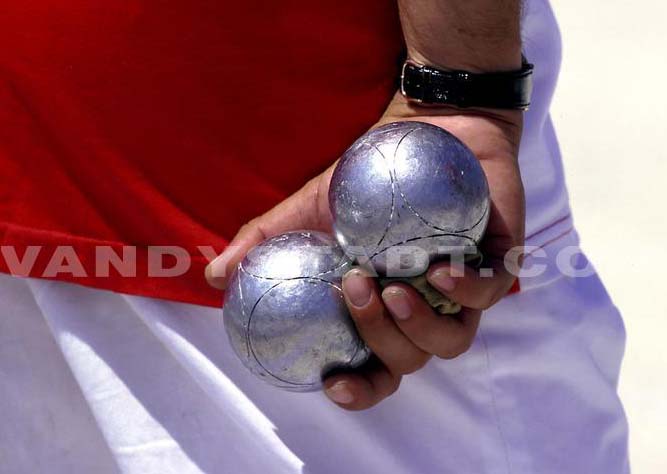
The bowls is played with balls approved by the Federation or the FIPJP and the following characteristics:
- Be metal
- Having a diameter of 7.05 cm (minimum) and 8cm (maximum).
- Having a weight between 650 grams (minimum) and 800 grams (maximum).
- Be either leaded or sandblasted.


The bowls is played on all terrains. However, by decision of the Organizing Committee or the referee, teams may be required to meet a defined field. In this case, it must be for the National Championships and International Competitions, the following minimum dimensions: 4 feet wide by 15 meters in length.
For other competitions Federations may grant or allow their premises dismemberments to grant exemptions on such minimum unless they are below 12 mx 3 m.
PointsGames are played to 13 points, with possibility to play those chickens and framing by 11 points.
DepartureThe departure may be less than 35 cm nor more than 50 cm in diameter. It should be marked more than one meter from any obstacle or boundary of land and prohibited in competitions in open field, at least 2 meters of another throwing circle in use.
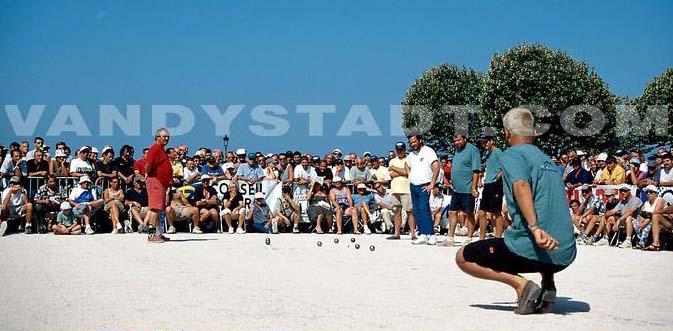
For that purpose made by a player to be valid it must:
1) That the distance between the nearest edge of the circle of the launch is:
- 4 feet minimum and 8 feet maximum for Minimes
- Minimum 5 meters and 9 meters maximum for Cadets
- 6 feet minimum and 10 feet maximum for Juniors and Seniors.
2) That the circle of the launch is at least one meter from any obstacle and the boundary of a prohibited ground.
3) Whether the goal is to meter minimum of obstructions and the nearest boundary of a prohibited ground.
At the following, the jack is thrown from a circle drawn around the point where it was at the previous end, except in the following cases:
Case launched toIf the object is launched stopped by the referee, a player, spectator, animal or any moving object, it is not valid and must be restarted without the jet account for 3 to which team or player right.
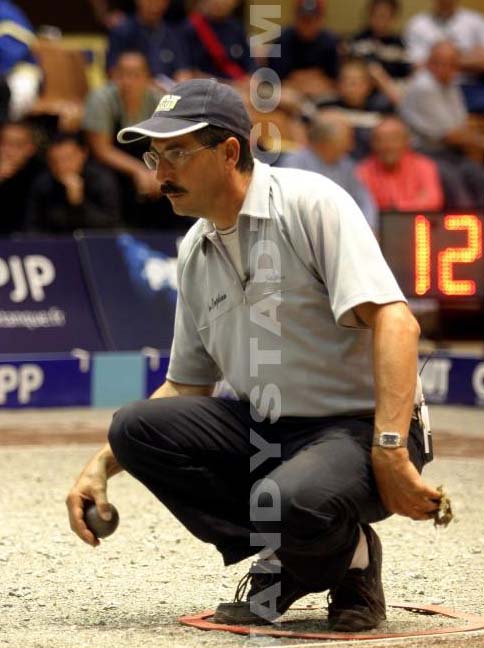
The goal is zero in the six following cases:
1) When, after being launched, the goal is not within the limits laid down in Article "distance".
2) When, during an end, the jack is moved into forbidden territory even if it returns to ground allowed. The goal straddling the boundary of land is permitted good. There is no entirely after having passed the limit of authorized site or line loss, ie when it is completely beyond the assurance that limit. Is regarded as forbidden territory puddle of water on which a jack floats freely.
3) When lying terrain permitted, moved the goal is not visible from the circle, as provided by section "distance". However the goal by a masked ball is not zero. The arbitrator is authorized to temporarily remove a boule to ascertain whether the purpose is visible.
4) When the goal is moved over 20 meters or less than 3 meters from the throwing circle.
5) When the goal, moved, was not found, the search time being limited to five minutes.
6) When land is prohibited between the goal and the throwing circle.
ObstacleIt is forbidden for players to delete, move or crush any obstacle standing on the playground
Visibility and travel purposeIf, during an end, the goal is suddenly obscured by a leaf or a piece of paper, these objects are removed.
If the goal is then stopped moving due to wind or slope of the terrain, for example, it is returned to its original position, provided it has been marked.
If, during an end, the goal is moved to another playground, limited or not, the goal is good, subject to the provisions of Article "invalid purpose".
Game after the revocation orderIf, during an end, the goal is zero 3 cases:
- There are still balls to play in each team: the end is void.
- It is balls to one team: this team scores as many points it has boules to play.
- Both teams have more balls in hand: the end is void.
Case to hit1) If the object struck is stopped by a spectator or the referee, he retains his position.
2) If the object struck is stopped by a player's opponent who was arrested has a choice between:
- Leave the goal at his new place
- Return the object to its original position,
- Place the object in the extension of a line from its original position to where he is, but only authorized playground, and so that leads can be pursued.
If, after having been struck, the object passes in his career ground to return eventually banned in the playground, it is necessary to implement the provisions of Article "game after the revocation order.
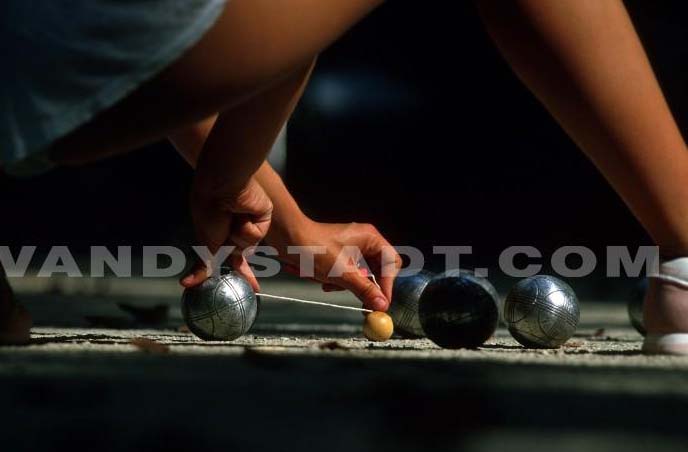
When, during an end, the goal has been moved outside the designated field, he is revived, leading to the next point where it was when it was moved provided that: (Article "distance")
- The circle can be traced to 1 meter from any obstacle and the boundary of a prohibited ground.
- The launch of the goal can be at any distance regulations.
The game ProvencalIt is played by teams of 3 players with the ball tracks at tacks with a maximum weight of 900 grams (the metal balls are permitted). We must start the object over a distance of between 15 and 22 meters.
To point, we must make a step forward and three steps when drawing.
Copyright Sportquick/Promedi

 |
Champion du monde de triplette en 1995 et 1996. Champion de France de tête à tête en 1991 et 1992. Copyright Sportquick/Promedi... |
 |
Champion de monde de triplette en 2000 (2eme en 1994, 1999, 2005 et 2006). 6 fois champion de Belgique en triplette et 1 fois en doublette. Copyright Sportquick/Promedi... |
 |
Champion du monde de triplette en 1985, 1988, 1989, 1994 et 1998. Champion de France de triplette en 1985, 1994 et 1996, Vainqueur des Masters de pétanque en 2000. Copyright Sportquick/Promedi... |



